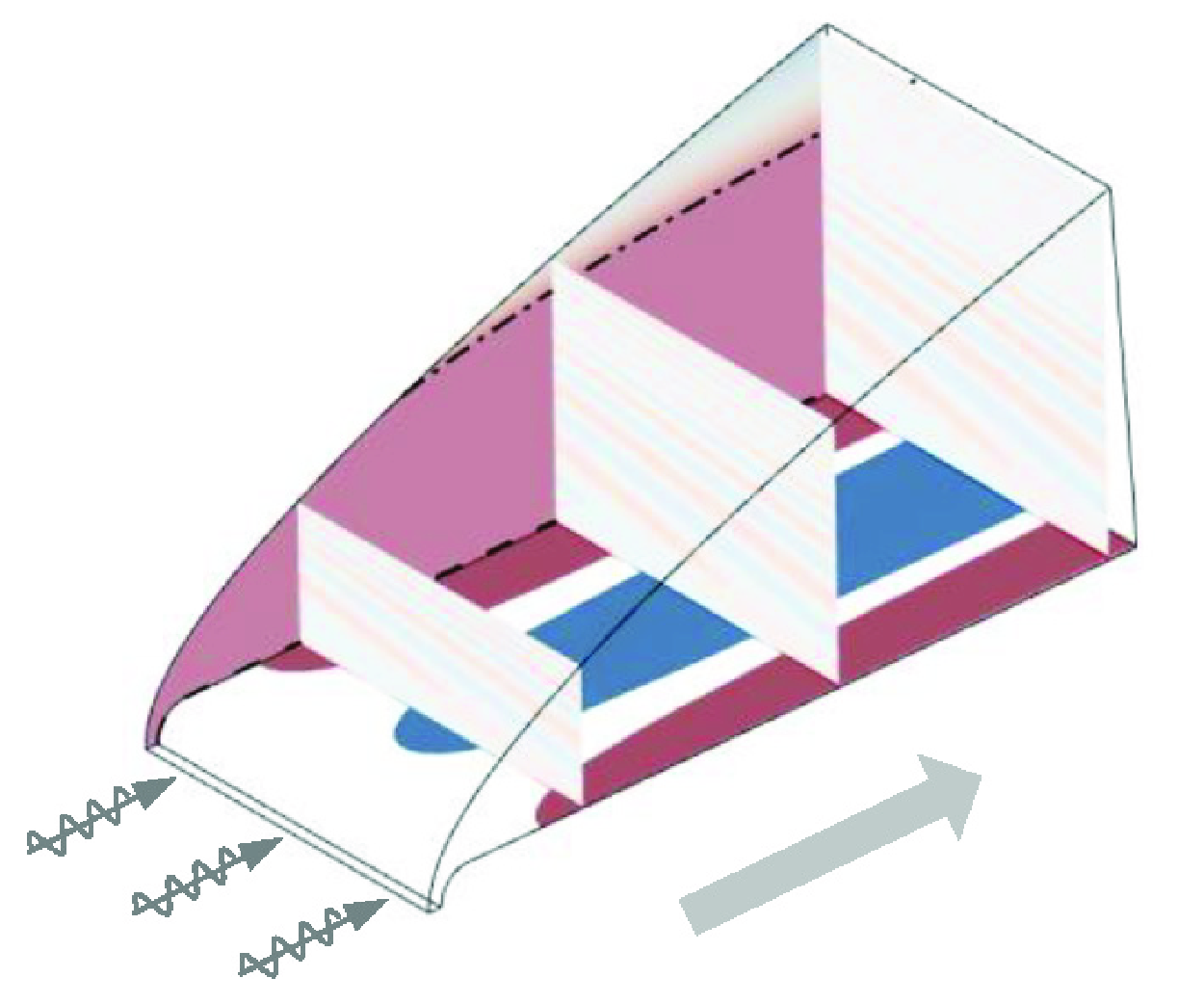Article contents
Excitation of non-modal perturbations in hypersonic boundary layers by free stream forcing: shock-fitting harmonic linearised Navier–Stokes approach
Published online by Cambridge University Press: 24 June 2025
Abstract

In this paper, we study the receptivity of non-modal perturbations in hypersonic boundary layers over a blunt wedge subject to free stream vortical, entropy and acoustic perturbations. Due to the absence of the Mack-mode instability and the rather weak growth of the entropy-layer instability within the domain under consideration, the non-modal perturbation is considered as the dominant factor triggering laminar–turbulent transition. This is a highly intricate problem, given the complexities arising from the presence of the bow shock, the entropy layer and their interactions with oncoming disturbances. To tackle this challenge, we develop a highly efficient numerical tool, the shock-fitting harmonic linearised Navier–Stokes (SF-HLNS) approach, which offers a comprehensive investigation on the dependence of the receptivity efficiency on the nose bluntness and properties of the free stream forcing. The numerical findings suggest that the non-modal perturbations are more susceptible to free stream acoustic and entropy perturbations compared with the vortical perturbations, with the optimal spanwise length scale being comparable with the downstream boundary-layer thickness. Notably, as the nose bluntness increases, the receptivity to the acoustic and entropy perturbations intensifies, reflecting the transition reversal phenomenon observed experimentally in configurations with relatively large bluntness. In contrast, the receptivity to free stream vortical perturbations weakens with increasing bluntness. Additionally, through the SF-HLNS calculations, we examine the credibility of the optimal growth theory (OGT) on describing the evolution of non-modal perturbations. While the OGT is able to predict the overall streaky structure in the downstream region, its accuracy in predicting the early-stage evolution and the energy amplification proves to be unreliable. Given its high-efficiency and high-accuracy nature, the SF-HLNS approach shows great potential as a valuable tool for conducting future research on hypersonic blunt-body boundary-layer transition.
Information
- Type
- JFM Papers
- Information
- Copyright
- © The Author(s), 2025. Published by Cambridge University Press
References
- 1
- Cited by


